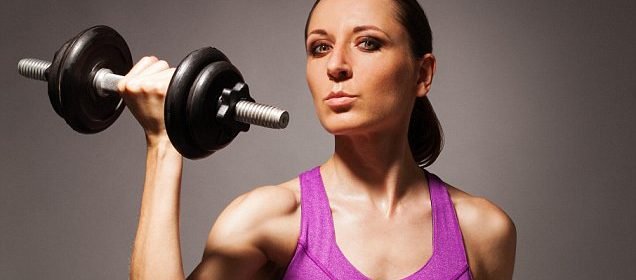ASK DR ELLIE: Can weights really bolster my bones?

ASK DR ELLIE: Can weights really bolster my bones?
Women are more likely to develop osteopenia, as the menopause contributes to a reduction in bone strength due to a decline in the hormone oestrogen
I have been told by my GP that I have low bone density and have been given some weights to do a few exercises. But I tried and have now strained my back. Am I doing something wrong?
Low bone density is sometimes referred to as osteopenia. This means the bones have lost some of their density but are not weak enough to warrant a diagnosis of full-blown bone-thinning disease osteoporosis, which raises the risk of fractures. Women are more likely to develop osteopenia, as the menopause contributes to a reduction in bone strength due to a decline in the hormone oestrogen.
Exercises can increase bone density, and there are two types to be aware of.
Weight-bearing exercises do not necessarily have to involve weights, but impact – including jogging, skipping, hopping and walking – is key as the vibrations help stimulate bone growth. Start at 20 minutes and build up.
Muscle-strengthening exercises are helpful as activating the muscles in turn pulls on the bones, improving their strength. This can be done without weights by using an elastic resistance band or even your own body weight. Squats, lunges and press-ups are good examples.
If you want to use weights, build up from as little as one kilogram. This is known as resistance training.
The Royal Osteoporosis Society offers guides and videos on exercising safely for bone strength. Begin with a regime of twice a week for 20 minutes, starting at the lowest level of resistance and repetitions.
A supplement of Vitamin D can be useful to maintain bone strength levels and a calcium-rich diet is also important.
I suffer from dry, itchy skin on my elbows and shins. My doctor said it was called ichthyosis, and was not harmful. But it’s embarrassing and I would like something to treat it. Do you have any ideas?
Ichthyosis is a condition where the skin is very dry, rough and scaly. It can be present from childhood and, in these cases, has genetic causes.
If someone develops ichthyosis as an adult, it is called acquired ichthyosis and is usually much milder. In adulthood, it is often associated with thyroid or kidney disease and may also be a side effect of certain cancer treatments.
What to do about…
… a sprain
Sprains are common injuries of a joint when the ligaments have been twisted, pulled or slightly torn. The recognised home treatment for a sprain is Rest, Ice, Compression and Elevation – sometimes known as the RICE protocol. Rest the joint as much as you can and try not to put weight on it. Ice it for 20 minutes at least three times a day with an ice pack or frozen veg wrapped in a towel. Compress the area with a support bandage and, as much as possible, elevate the joint, as these both minimise swelling and pain. Avoid heat packs as this can make swelling worse.
The aim of treatment for both types is to moisturise the skin daily using lotion, cream or ointment. Many are available in pharmacists and on prescription.
The ideal way to use these is to apply them to wet skin to add as much moisture as possible.
Thickened skin can be removed by rubbing a pumice stone on wet skin after a shower.
Exfoliating products are also available on prescription, as are keratolytics – creams used to loosen scales.
Occlusion therapy can also be recommended by a dermatologist. This involves ‘wrapping’ the affected area in a soft bandage overnight over creams or keratolytics applied directly to the skin.
Source: Read Full Article
